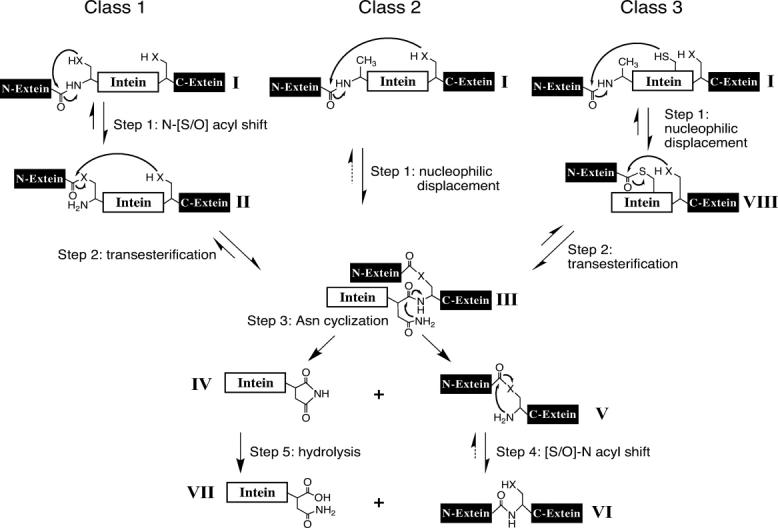Figure 2.

The splicing mechanisms for the three classes of inteins. The majority of inteins follow the Class 1 intein-mediated protein splicing mechanism, which consists of four coordinated nucleophilic displacement reactions. Class 2 and 3 inteins lack an N-terminal Cys, Ser, or Thr and, therefore, cannot perform the initial acyl shift required by Class 1 inteins. In Class 2 inteins, Cys+1 directly attacks an amide bond at the N-terminal splice junction to form the standard Block G branched intermediate. Known examples of Class 2 inteins are the KlbA inteins.12 The Class 3 intein reaction scheme also consists of four coordinated nucleophilic displacements but includes two branched intermediates: (Step 1) the Cys in Block F (Cys323 in the Dra Snf2 intein) attacks the peptide bond at the N-terminal splice junction, forming the Block F branched intermediate; (Step 2) the N-extein is transferred to the side chain of the +1 residue (Thr+1 in the Dra Snf2 intein) by a transesterification reaction resulting in the formation of the same Block G branched intermediate as in Class 1 or 2. Once the Block G branched intermediate is formed, the remainder of the splicing reaction is the same in all inteins. Residues within the intein assist these enzymatic reactions. However, in all classes, there is variability in the residues and positions within the intein that facilitate each reaction. Tetrahedral intermediates are not shown. “X” represents the sulfur or oxygen atoms in the side chains of Ser, Thr, or Cys and dashed arrows represent chemically feasible reverse reactions that have not been experimentally verified.
